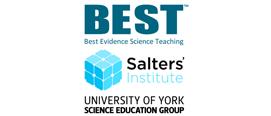- View more resources from this publisher
 Best Evidence Science Teaching
Best Evidence Science Teaching
Refraction and dispersion
These diagnostic questions and response activities (contained in the zip file) support students in being able to:
- Use ray diagrams to show how light refracts at a boundary between transparent media.
- Describe rules for the refraction of light at a boundary between transparent media.
- Use wavefront diagrams to show how water waves refract.
- Use a wave model to explain how light refracts.
- Compare the refraction of light at the boundary of different pairs of transparent media.
- Use ray diagrams to show how red light refracts as it passes through a prism with three 60o angles.
- Explain why red light refracts in the way it does through a prism with three 60o angles.
- Explain why blue light refracts more at a boundary than red light.
- Predict how blue light refracts as it passes through a prism with three 60o angles.
- Compare different colours of pure light.
The resources include details of common misconceptions and a summary of the research upon which the resources are based.
Download the zip file for all the questions and activities.
More resources like this can be found on the BEST webpage: Best Evidence in Science Teaching
Show health and safety information
Please be aware that resources have been published on the website in the form that they were originally supplied. This means that procedures reflect general practice and standards applicable at the time resources were produced and cannot be assumed to be acceptable today. Website users are fully responsible for ensuring that any activity, including practical work, which they carry out is in accordance with current regulations related to health and safety and that an appropriate risk assessment has been carried out.
Downloads
-
Preview - Refraction and dispersion 836.82 KB




